- HOME
- TRAINING
- Obedience
- Behaviour
- Videos
- Latest Newspaper Articles
- ABOUT US
- PUPPIES
- HOUSE BRAKING
- EATING HABITS
- JUMPING ON PEOPLE
- BITING HANDS
- BITING FURNITURE
- Destructive Attitude
- SEPARATION SYNDROME
- SHYNESS
- Dominant Dog
- Sheep worriers
- Excessive aggresiveness
- Dog vs dog
- Chasing
- Dominance aggression
- Sibling rilvary
- Fear aggression
- Pain induced aggression
- Dog agility
- Testimonials
- Dog photo Studio
- CONTACT
- Latest News
AGILITY
Classes started on Spring and finish on October , All our brand new equipment is safe and professional to the maximum standards of safety for competition, for small, medium and large dogs. We will not exclude any type of dogs for behavioural issues, our dog behaviourist 'The mexican dog whisperer "will be on site. We welcome everybody to enjoy life with their dogs.
Some people like to alternate between their obedience classes to the agility ones and everybody has at the daily group class half an hour of this exiting sport Agility .
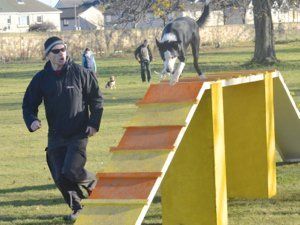
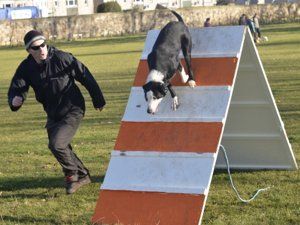
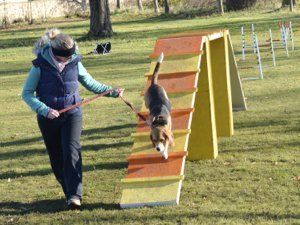
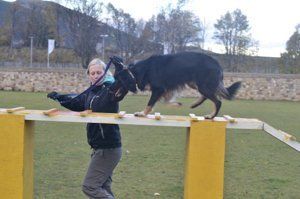
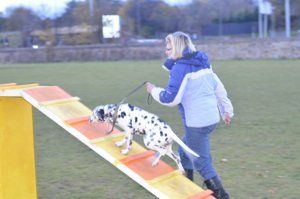
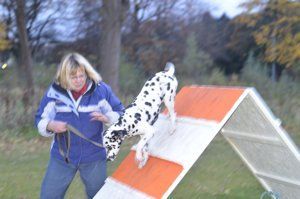
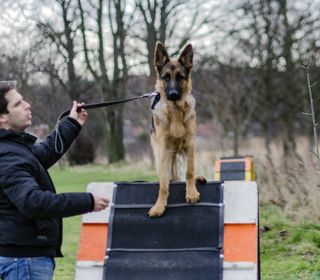


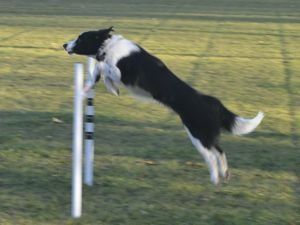

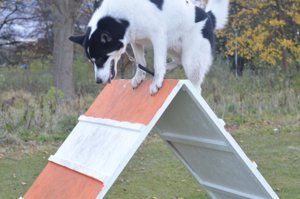
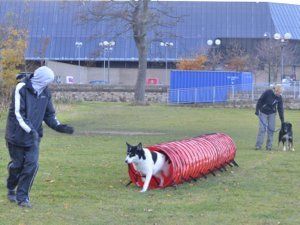
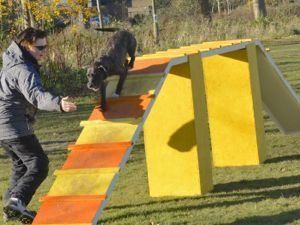

Dog agility is a dog sport in which a handler directs a dog through an obstacle course in a race for both time and accuracy. Dogs run off-leash with no food or toys as incentives, and the handler can touch neither dog nor obstacles.Consequently the handler's controls are limited to voice, movement, and various body signals, requiring exceptional training of the animal and coordination of the handler.
In its simplest form, an agility course consists of a set of standard obstacles laid out by a judge in a design of his or her own choosing in an area of a specified size. The surface may be of grass, dirt, rubber, or special matting. Depending on the type of competition, the obstacles may be marked with numbers indicating the order in which they must be completed.
Courses are complicated enough that a dog could not complete them correctly without human direction. In competition, the handler must assess the course, decide on handling strategies, and direct the dog through the course, with precision and speed equally important. Many strategies exist to compensate for the inherent difference in human and dog speeds and the strengths and weaknesses of the various dogs and handlers.
Competition basics
Because each course is different, handlers are allowed a short walk-through before the competition starts. During this time, all handlers competing in a particular class can walk or run around the course without their dogs, determining how they can best position themselves and guide their dogs to get the most accurate and rapid path around the numbered obstacles. The handler tends to run a path much different from the dog's path, so the handler can sometimes spend quite a bit of time planning for what is usually a quick run.
The walk-through is critical for success because the course's path takes various turns, even U-turns or 270° turns, can cross back on itself, can use the same obstacle more than once, can have two obstacles so close to each other that the dog and handler must be able to clearly discriminate which to take, and can be arranged so that the handler must work with obstacles between himself and the dog, called layering, or at a great distance from the dog.


Course map showing the layout of the course in the preceding photos. Maps like this are commonly used by handlers to help design their strategies. This is a fairly simple[citation needed], flowing course, probably used for novice dogs.
Printed maps of the agility course, called course maps, are often made available to the handlers before they run, to help the handlers plan their course strategy. The course map contains icons indicating the position and orientation of all the obstacles, and numbers indicating the order in which the obstacles are to be taken. Course maps were originally drawn by hand, but nowadays almost all course maps are created using a program called Clean Run Course Designer.
Each dog and handler team gets one opportunity together to attempt to complete the course successfully. The dog begins behind a starting line and, when instructed by his handler, proceeds around the course. The handler typically runs near the dog, directing the dog with spoken commands and with body language (the position of arms, shoulders, and feet).
Because speed counts as much as accuracy, especially at higher levels of competition, this all takes place at a full-out run on the dog's part and, in places, on the handler's part as well.
Scoring of runs is based on how many faults are incurred. Penalties can include not only course faults, such as knocking down a bar in a jump, but also time faults, which are the number of seconds over the calculated standard course time, which in turn is determined based on the competition level, the complexity of the course, and other factors.
From Wikipedia, the free encyclopedia